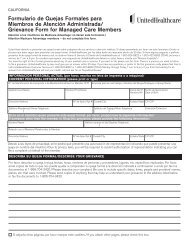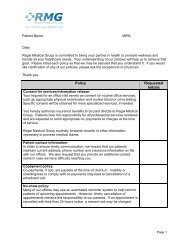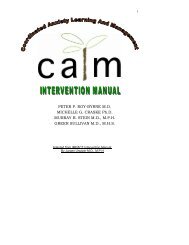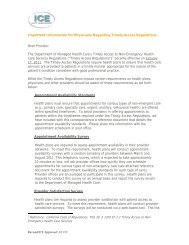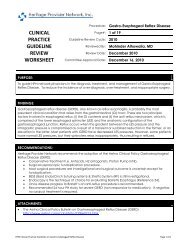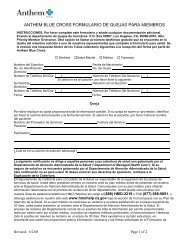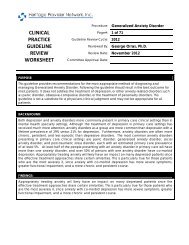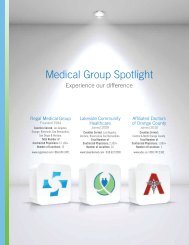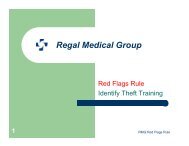Guide to Clinical Preventive Services 2012 - Agency for Healthcare ...
Guide to Clinical Preventive Services 2012 - Agency for Healthcare ...
Guide to Clinical Preventive Services 2012 - Agency for Healthcare ...
Create successful ePaper yourself
Turn your PDF publications into a flip-book with our unique Google optimized e-Paper software.
SCREENING FOR HEMOCHROMATOSISCLINICAL SUMMARY OF U.S. PREVENTIVE SERVICES TASK FORCE RECOMMENDATIONPopulation Asymp<strong>to</strong>matic general populationRecommendationDo not screen <strong>for</strong> hereditary hemochroma<strong>to</strong>sis.Grade: DRisk Assessment<strong>Clinical</strong>ly recognized hereditary hemochroma<strong>to</strong>sis is primarily associated with mutations on the hemochroma<strong>to</strong>sis (HFE)gene. Although this is a relatively common mutation in the U.S. population, only a small subset will develop symp<strong>to</strong>ms ofhemochroma<strong>to</strong>sis. An even smaller proportion of these individuals will develop advanced stages of clinical disease.Screening TestsGenetic screening <strong>for</strong> HFE mutations can accurately identify individuals at risk <strong>for</strong> hereditary hemochroma<strong>to</strong>sis. However,identifying an individual with the genotypic predisposition does not accurately predict the future risk <strong>for</strong> disease manifestation.InterventionsTherapeutic phlebo<strong>to</strong>my is the main treatment <strong>for</strong> hereditary hemochroma<strong>to</strong>sis. Phlebo<strong>to</strong>my is generally thought <strong>to</strong> have fewside effects.Balance of Benefits and Harms● ● Screening could lead <strong>to</strong> identification of a large number of individuals who possess the high-risk genotype but may nevermanifest the clinical disease. This may result in unnecessary surveillance and diagnostic procedures, labeling, anxiety,and, potentially, unnecessary treatments.● ● There is poor evidence that early therapeutic phlebo<strong>to</strong>my improves morbidity and mortality in individuals with screeningdetectedversus clinically-detected hemochroma<strong>to</strong>sis.● ● The USPSTF concluded that the potential harms of genetic screening <strong>for</strong> hereditary hemochroma<strong>to</strong>sis outweigh thepotential benefits.Other Relevant USPSTFRecommendationsThe USPSTF has also made recommendations on genetic testing <strong>for</strong> mutations in the breast cancer susceptibility gene <strong>to</strong>predict breast and ovarian cancer susceptibility. These recommendations are available athttp://www.uspreventiveservicestask<strong>for</strong>ce.org/.For a summary of the evidence systematically reviewed in making this recommendation, the full recommendation statement, and supporting documents,please go <strong>to</strong> http://www.uspreventiveservicestask<strong>for</strong>ce.org/.31




